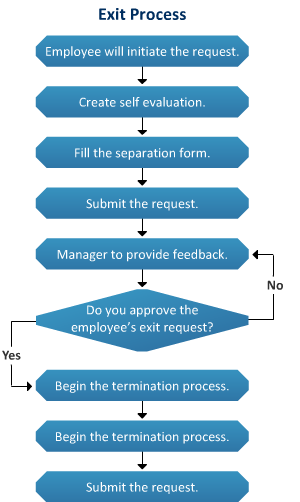Having a clear process to follow during Employee Exits will ensure you protect your business and its assets, and help the Employee leave with dignity. It is also a great time to get feedback from them about their time at your place.

Have a clear exit policy
The purpose of an employee exit policy is to have a process in place when an employee is leaving your employment (resignation, retirement, end of contract etc) When an employee resigns from their position, they should submit a written letter of resignation to their immediate supervisor based on what their notice period is. This could be stated in the employee’s letter of engagement or (if no letter exists) be linked to the National Employment Standards notice table…. During the employee’s notice period; they must continue to assume their normal responsibilities and should assist with a handover to the existing team or their replacement if in place.
Conduct and Exit Interview
An exit interview is often overlooked but is an extremely valuable organizational effectiveness tool. The purpose of exit interviews is to understand the employee’s perceptions and experiences and get feedback about the job the employee held, their work environment, and your place. A good exit interview system can help reduce turnover and increase employee satisfaction and commitment by addressing some of the things that people are leaving because of.
Follow an Exit Checklist
It is important to have a process in place and a set of steps to follow and ensure the list is completed when each employee finishes. This is extremely handy to ensure you don’t forget anything when the employee leaves. The best person to complete the checklist is usually the employee’s supervisor and should be done on the day they leave. The checklist can include the following (but is not limited to these items below):
Arrange for the employee to do a formal handover to someone within the business or at least document the procedures of their role explaining any complicated/important elements
Conduct an exit interview
Notify other employees that they are leaving
Collect any company property including their company laptop, Smartphone, company credit card, keys, security passes, parking pass, name badges and business identification, a uniform if the business owns it, any tools, electronic devices or other business property they have
Ask them to clean out their desk
Process all outstanding payroll, leave accrued and expenses. If they had a mobile phone account ensure this account is reconciled
Delete their computer access, have their files in network folders copied to the network, cancel their accounts. Remove them from the company intranet
Disable their building or property access
Remind them of confidentiality clauses in their letter of engagement
Ensure you have their current address and phone number is on file in case the they need to be contacted after they leave
Make sure they and their supervisor sign off on the checklist when it is done.
In the end, it is always nice to part on good terms, and you never know the person leaving your employment may become a client or refer business to you in the future.
We always say that it is best to help a departing employee leave with dignity – regardless of the reason they are leaving.

 Follow
Follow